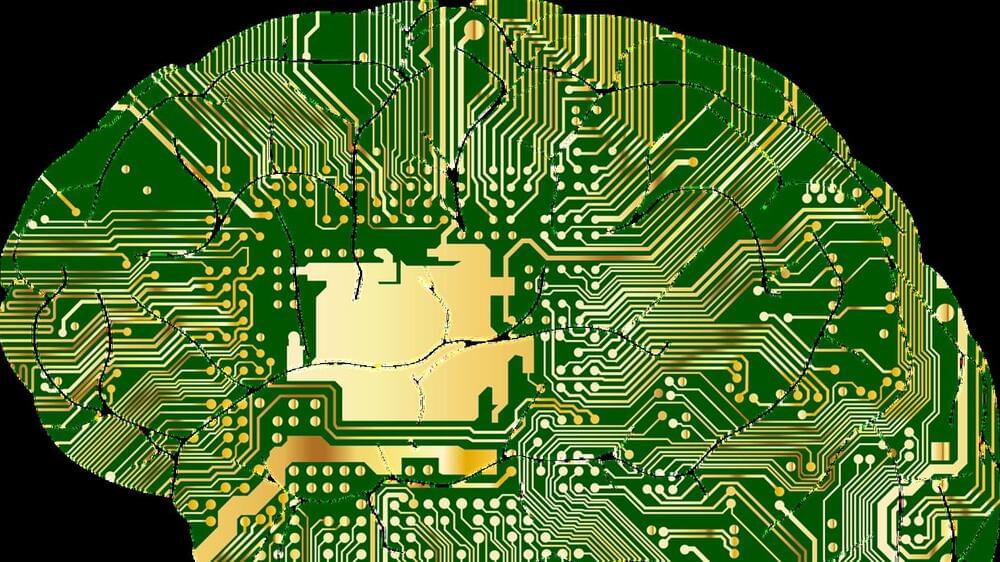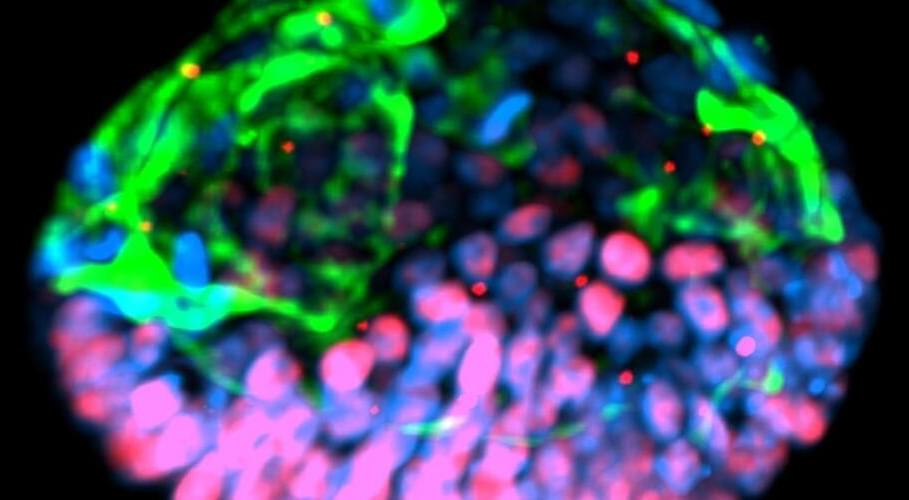Norn, the brainchild of a former leading Microsoft developer, feels like a human and is integrated with software previously used for hunting terrorists.



Wake Forest Institute for Regenerative Medicine (WFIRM) scientists working on CRISPR/Cas9-mediated gene editing technology have developed a method to increase efficiency of editing while minimizing DNA deletion sizes, a key step toward developing gene editing therapies to treat genetic diseases.
CRISPR (clustered regularly interspaced short palindromic repeats) technology is used to alter DNA sequences and modify gene function. CRISPR/Cas9 is an enzyme that is used like a pair of scissors to cut two strands of DNA at a specific location to add, remove or repair bits of DNA. By modifying gene function, scientists hope to treat genetic diseases by halting a diseased cell’s ability to continue replicating the defective DNA. CRISPR/Cas9 is the most versatile genetic manipulation available and has a wide range of potential applications. While CRISPR/Cas9 mainly generates short insertions or deletions at the target site, it may also make large DNA deletions around the specific target site. These large deletions cause safety concerns and may decrease functional editing efficiency.
The WFIRM team is looking for ways to reduce the chances of this happening. The research described in their recent paper, published recently in Nucleic Acids Research, sought to address the generation of unpredictable on-target long DNA deletions and find a way to guard against them, said lead author Baisong Lu, Ph.D., of WFIRM.
Dr. Ben Goertzel, a self-described Cosmist and Singularitarian, is one of the world’s leading researchers in artificial general intelligence (AGI), natural language processing, cognitive science, data mining, machine learning, computational finance, bioinformatics, and virtual worlds and gaming He has published a dozen scientific books, 100+ technical papers, and numerous journalistic articles.
Joscha Bach is a cognitive scientist focused on cognitive architectures, mental representation, emotion, social modeling, and learning.
Currently the Principal AI Engineer, Cognitive Computing at Intel Labs, having authored the book “Principles of Synthetic Intelligence”, his focus is how to build machines that can perceive, think and learn.
In this video you can watch his keynote presentation at the AGI-22 Conference, on the topic of “It from no Bit: Basic Cosmology from an AI Perspective”.
Joscha’s Twitter: https://twitter.com/Plinz.
Joscha’s Website: http://bach.ai/
SingularityNET is a decentralized marketplace for artificial intelligence. We aim to create the world’s global brain with a full-stack AI solution powered by a decentralized protocol.
We gathered the leading minds in machine learning and blockchain to democratize access to AI technology. Now anyone can take advantage of a global network of AI algorithms, services, and agents.
In this episode we explore a User Interface Theory of reality. Since the invention of the computer virtual reality theories have been gaining in popularity, often to explain some difficulties around the hard problem of consciousness (See Episode #1 with Sue Blackmore to get a full analysis of the problem of how subjective experiences might emerge out of our brain neurology); but also to explain other non-local anomalies coming out of physics and psychology, like ‘quantum entanglement’ or ‘out of body experiences’. Do check the devoted episodes #4 and #28 respectively on those two phenomena for a full breakdown.
As you will hear today the vast majority of cognitive scientists believe consciousness is an emergent phenomena from matter, and that virtual reality theories are science fiction or ‘Woowoo’ and new age. One of this podcasts jobs is to look at some of these Woowoo claims and separate the wheat from the chaff, so the open minded among us can find the threshold beyond which evidence based thinking, no matter how contrary to the consensus can be considered and separated from wishful thinking.
So you can imagine my joy when a hugely respected cognitive scientist and User Interface theorist, who can cut through the polemic and orthodoxy with calm, respectful, evidence based argumentation, agreed to come on the show, the one and only Donald D Hoffman.
Hoffman is a full professor of cognitive science at the University of California, Irvine, where he studies consciousness, visual perception and evolutionary psychology using mathematical models and psychophysical experiments. His research subjects include facial attractiveness, the recognition of shape, the perception of motion and colour, the evolution of perception, and the mind-body problem. So he is perfectly placed to comment on how we interpret reality.
Hoffman has received a Distinguished Scientific Award of the American Psychological Association for early career research into visual perception, the Rustum Roy Award of the Chopra Foundation, and the Troland Research Award of the US National Academy of Sciences. So his recognition in the field is clear.
He is also the author of ‘The Case Against Reality’, the content of which we’ll be focusing on today; ‘Visual Intelligence’, and the co-author with Bruce Bennett and Chetan Prakash of ‘Observer Mechanics’.
What we discuss:
00:00 Intro.
05:30 Belief VS questioning.
11:20 Seeing the world for survival VS for knowing reality as it truly is.
13:30 Competing strategies to maximise ‘fitness’ in the evolutionary sense.
15:22 Fitness payoff’s can be calculated as mathematical functions, based on different organisms, states and actions.
17:00 Evolutionary Game Theory computer simulations at UC Irvine.
21:30 The payoff functions that govern evolution do not contain information about the structure of the world.
25:00 The world is NOT as it seems VS The world is NOTHING like it seems.
29:30 Space-time cannot be fundamental.
32:30 Local and non-contextual realism have been proved false.
37:45 A User-Interface network of conscious agents.
41:30 A virtual reality computer analogy.
43:30 Space and time and physical objects are merely a user interface.
49:30 Reductionism is false.
53:30 User Interface theory VS Simulation theory.
56:30 Panpsychists are fundamentally physicalists.
57:30 Making mathematical predictions about conscious agents.
59:30 Like space and time maths are invented metrics, so must we start with consciousness metrics.
01:03:30 Experiences lead to actions, which affect other agent’s conscious experiences.
01:08:00 The notion of truth is deeper than the notion of proof and theory.
01:10:00 Consciousness projects space-time so it can explore infinite possibilities.
01:13:00 ‘Not that which the eye can see, but that whereby the eye can see’, Kena Upanishad.
01:17:30 Is nature written in the language of Maths?
01:27:00 Consciousness is like the living being, and maths is like the bones.
01:34:50 Don Hoffman on Max Tegmark’s ‘Everything that is mathematically possible is real’
01:48:00 Different analogies for different eras.
References:
How likely is it that we live in a simulation? Are virtual worlds real?
In this first episode of the 2nd Series we delve into the fascinating topic of virtual reality simulations and the extraordinary possibility that our universe is itself a simulation. For thousands of years some mystical traditions have maintained that the physical world and our separated ‘selves’ are an illusion, and now, only with the development of our own computer simulations and virtual worlds have scientists and philosophers begun to assess the statistical probabilities that our shared reality could in fact be some kind of representation rather than a physical place.
As we become more open to these possibilities, other difficult questions start to come into focus. How can we create a common language to talk about matter and energy, that bridges the simulated and simulating worlds. Who could have created such a simulation? Could it be an artificial intelligence rather than a biological or conscious being? Do we have ethical obligations to the virtual beings we interact with in our virtual worlds and to what extent are those beings and worlds ‘real’? The list is long and mind bending.
Fortunately, to untangle our thoughts on this, we have one of the best known philosophers of all things mind bending in the world, Dr. David Chalmers; who has just released a book ‘Reality+: virtual worlds and the problems of philosophy’ about this very topic. Dr. Chalmers is an Australian philosopher and cognitive scientist specialising in the areas of philosophy of mind and philosophy of language. He is a Professor of Philosophy and Neuroscience at New York University, as well as co-director of NYU’s Center for Mind, Brain and Consciousness. He’s the founder of the ‘Towards a Science of Consciousness Conference’ at which he coined the term in 1994 The Hard Problem of Consciousness, kicking off a renaissance in consciousness studies, which has been increasing in popularity and research output ever since.
Donate here: https://www.chasingconsciousness.net/episodes.
What we discuss in this episode:
00:00 Short Intro.
06:00 Synesthesia.
08:27 The science of knowing the nature of reality.
11:02 The Simulation Hypothesis explained.
15:25 The statistical probability evaluation.
18:00 Knowing for sure is beyond the reaches of science.
19:00 You’d only have to render the part you’re interacting with.
20:00 Clues from physics.
22:00 John Wheeler — ‘It from bit’
23:32 Eugene Wigner: measurement as a conscious observation.
27:00 Information theory as a useful but risky hold-all language tool.
34:30 Virtual realities are real and virtual interactions are meaningful.
37:00 Ethical approaches to Non-player Characters (NPC’s) and their rights.
38:45 Will advanced AI be conscious?
42:45 Is god a hacker in the universe up? Simulation Theology.
44:30 Simulation theory meets the argument for the existence of God from design.
51:00 The Hard problem of consciousness applies to AI too.
55:00 Testing AI’s consciousness with the Turing test.
59:30 Ethical value applied to immoral actions in virtual worlds.
References:

What drew his attention was that the cells seemed to change much faster than expected—they arranged themselves rapidly over a few days into a lopsided circle.
What was it? Shao startled Googling to see if he could identify the structure. That’s when he landed on a website called The Virtual Human Embryo and found some microscope photos of ten-day old human embryos shortly after implantation, fused to the uterine wall. There was the beginning of the amniotic sac and, inside it, the embryonic disc, or future body. They matched what he was seeing.
Shao informed his coworkers, a mixed team of biologists and engineers, at the University of Michigan. “When I showed the image to the team, everyone said, ” Wow, we need to figure out what to do,” says Shao. Had they somehow made a real human embryo from stem cells? ” At that point, we started to be more cautious.”

Francis Heylighen started his career as yet another physicist with a craving to understand the foundations of the universe – the physical and philosophical laws that make everything tick. But his quest for understanding has led him far beyond the traditional limits of the discipline of physics. Currently he leads the Evolution, Complexity and COgnition group (ECCO) at the Free University of Brussels, a position involving fundamental cybernetics research cutting across almost every discipline. Among the many deep ideas he has pursued in the last few decades, one of the most tantalizing is that of the Global Brain – the notion that the social, computational and communicative matrix increasingly enveloping us as technology develops, may possess a kind of coherent intelligence in itself.
I first became aware of Francis and his work in the mid-1990s via the Principia Cybernetica project – an initiative to pursue the application of cybernetic theory to modern computer systems. Principia Cybernetica began in 1989, as a collaboration between Heylighen, Cliff Joslyn, and the late great Russian physicist, dissident and systems theorist Valentin Turchin. And then 1993, very shortly after Tim Berners-Lee released the HTML/HTTP software framework and thus created the Web, the Principia Cybernetica website went online. For a while after its 1993 launch, Principia Cybernetica was among the largest and most popular sites on the Web. Today the Web is a different kind of place, but Principia Cybernetica remains a unique and popular resource for those seeking deep, radical thinking about the future of technology, mind and society.

Because our universe is so vast, it seems impossible that anything else could exist. According to experts, we may be in a 4-dimensional black hole.
The singularity, an endlessly hot and dense point in space, was the birthplace of our universe. According to scientists like James Beecham at CERN, black holes in our cosmos might be described in the same way that they are in the scientific community.
When enormous stars die and collapse into an impossibly dense mass, they form black holes from which even the smallest amount of light cannot escape. According to NASA, the event horizon is the border in space beyond which no light can leave or any object can return.
